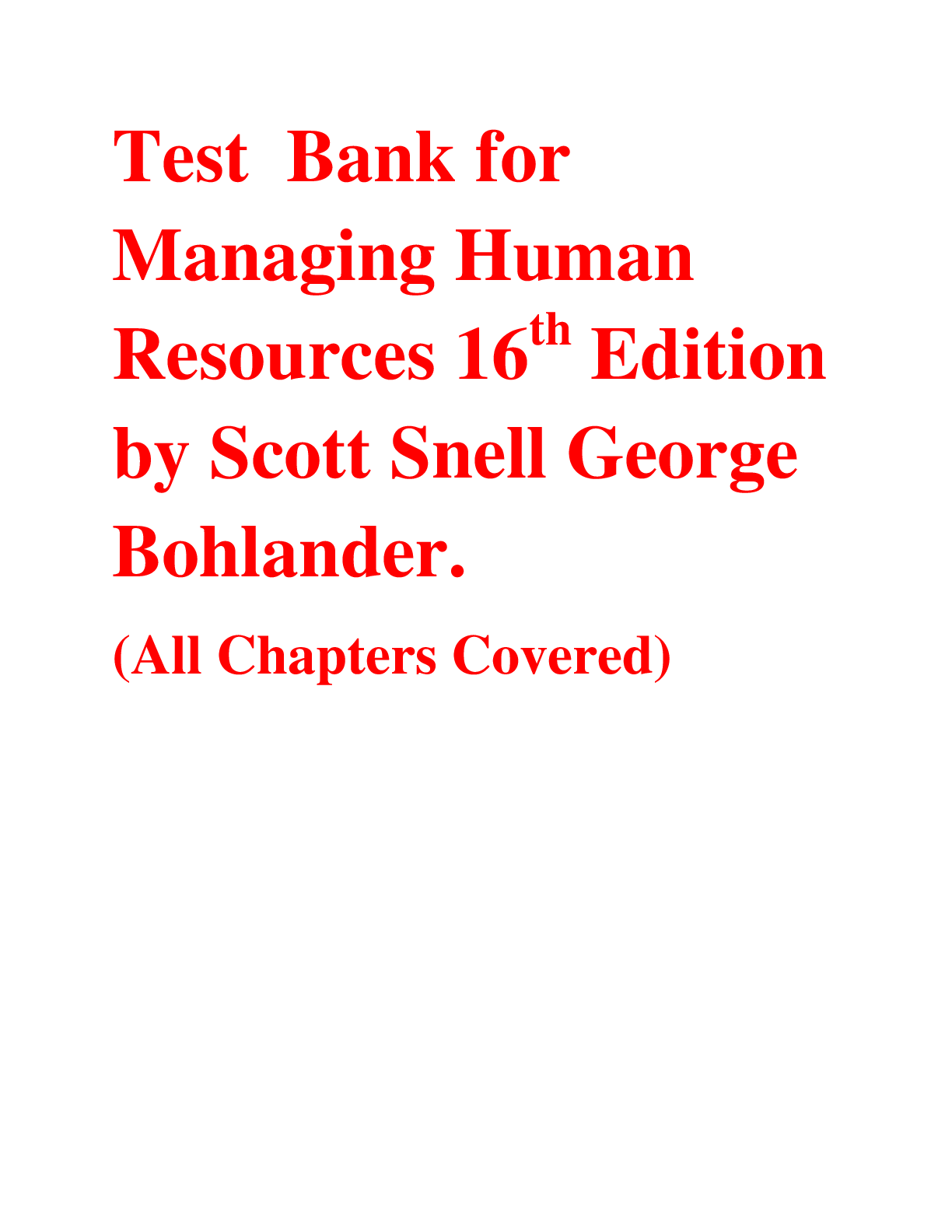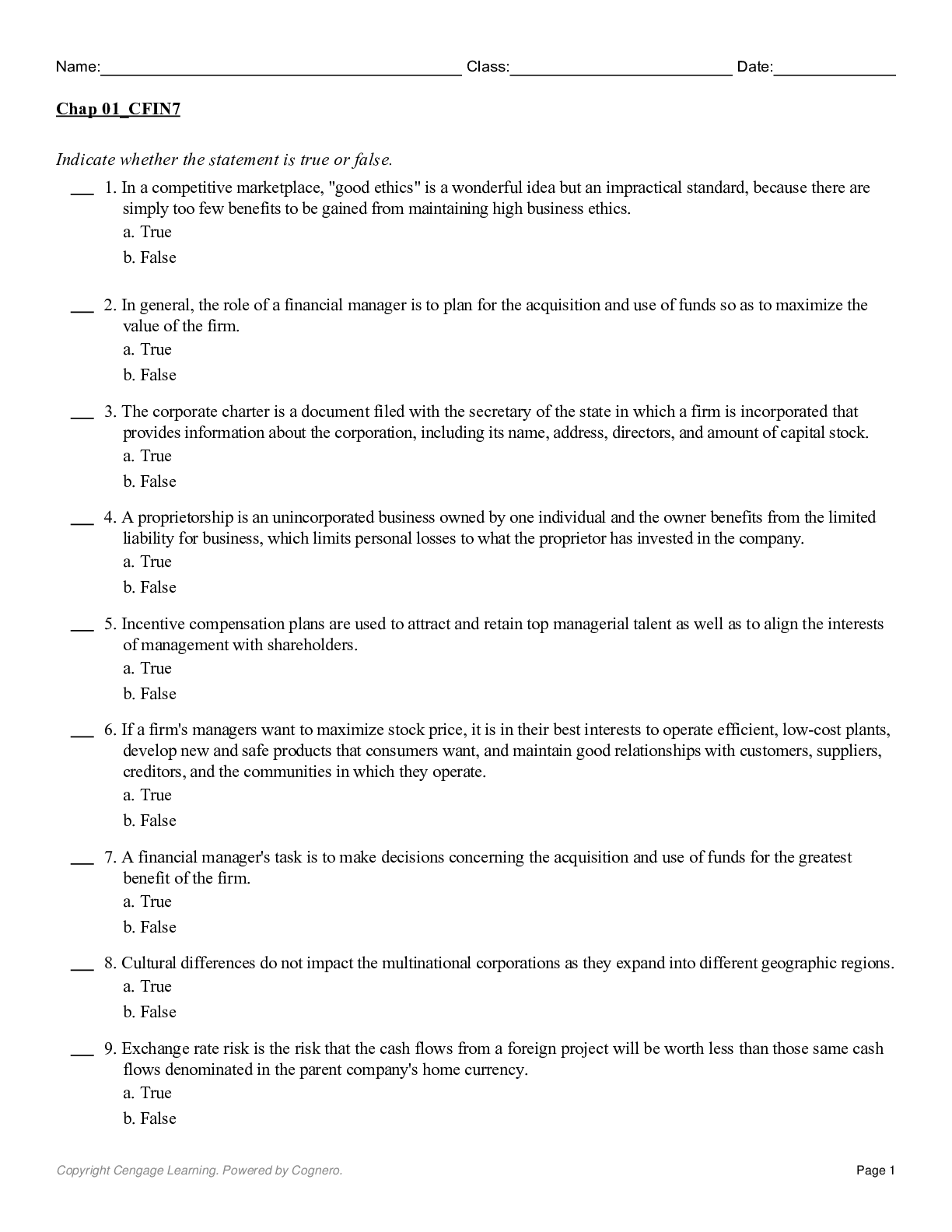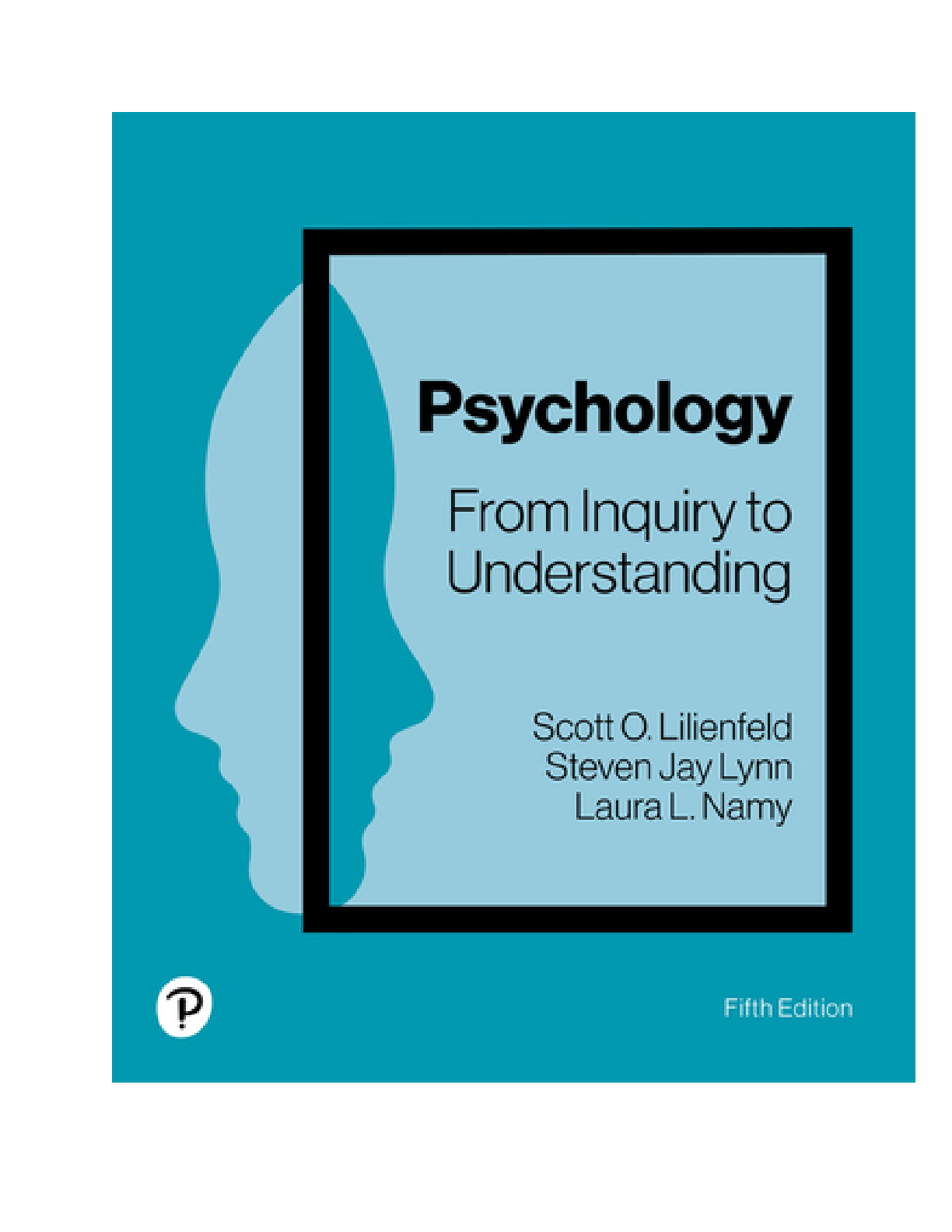CFIN, 7th Edition by Scott Besley, Eugene Brigham TEST BANK
Document Content and Description Below
Test Bank for CFIN 7, 7th Edition, 7e by Scott Besley, Eugene F. Brigham TEST BANK ISBN-13: 9780357515365 Full chapters included Chapter 1: An Overview of Managerial Finance 1.1: What Is Finance... ? 1.2: Alternative Forms of Business Organization 1.3: What Goal(s) Should Businesses Pursue? 1.4: What Roles Do Ethics and Governance Play in Business Success? 1.5: Forms of Businesses in Other Countries Chapter 2: Analysisof FinancialStatements 2.1: Financial Reports 2.2: Financial Statements 2.3: Financial Statement (Ratio) Analysis 2.4: Uses and Limitations of Ratio Analysis Chapter 3: The Financial Environment: Markets, Institutions, and Investment Banking 3.1: What Are Financial Markets? 3.2: Types of Financial Markets 3.3: The Investment Banking Process 3.4: Financial Intermediaries and Their Roles in Financial Markets 3.5: International Financial Markets Chapter 4: Time Value of Money 4.1: Cash Flow Patterns 4.2: Future Value (FV) 4.3: Present Value (PV) 4.4: Solving for Interest Rates (r) AND Time (n) 4.5: Annual Percentage Rate (APR) and Effective Annual Rate (EAR) 4.6: Amortized Loans Chapter 5: The Cost of Money (Interest Rates) 5.1: The Cost of Money 5.2: Determinants of Market Interest Rates 5.3: The Term Struct ure of Interest Rates 5.4: Ot her Fact ors That Influence Interest Rate Levels 5.5: Interest Rate Levels and Stock Prices Chapter 6: Bonds (Debt)-Characteristics and Valuation 6.1: Characteristics and Types of Debt 6.2: Bond Ratings 6.3: Valuation of Bonds 6.4: Finding Bond Yields (Market Rates): Yield to Maturity and Yield to Call 6.5: Interest Rates and Bond Values Chapter 7: Stocks (Equity)-Characteristicsand Valuation 7.1: Types of Equity 7.2: Stock Valuation-The Dividend Discount Model (DDM) 7.3: Other Stock Valuation Methods 7.4: Changes in Stock Prices Chapter 8: Risk and Rates of Return 8.1: Defining and Measuring Risk 8.2: Expected Rate of Return 8.3: Portfolio Risk-Holding Combinations of Investments 8.4: The Relationship between Risk and Rates of Return: The CAPM 8.5: Stock Market Equilibrium 8.6: Different Types of Risk Chapter 9: Capital BudgetingTechniques 9.1: Importance of Capital Budgeting 9.2: Evaluating Capital Budgeting Projects 9.3: Comparison of the NPV and IRR Methods 9.4: Modified Internal Rate of Return 9.5: Use of Capital Budgeting Techniques in Practice Chapter 10: Project Cash Flows and Risk 10.1: Cash Flow Estimation 10.2: Capital Budgeting Project Evaluation 10.3: Incorporating Risk in Capital Budgeting Analysis 10.4: Multinational Capital Budgeting Chapter 11: The Cost of Capital 11.1: Component Costs of Capital 11.2: Weighted Average Cost of Capital (WACC) 11.3: Combining the MCC and Investment Opportunity Schedules (IOS) 11.4: WACC versus Required Rate of Return of Investors Chapter 12: Capital Structure 12.1: The Target Capital Structure 12.2: Determining the Optimal Capital Structure 12.3: Degree of Leverage 12.4: Liquidity and Capital Structure 12.5: Capital Structure Theory 12.6: Variations in Capital Structures among Firms Chapter 13: Distribution of Retained Earnings: Dividends and Stock Repurchases 13.1: Dividend Policy and Stock Value 13.2: Dividend Payments in Practice 13.3: Factors Influencing Dividend Policy 13.4: Stock Dividends and Stock Splits 13.5: Stock Repurchases 13.6: Dividend Policies Around the World Chapter 14: Managing Short-Term Financing (Liabilities) 14.1: Working Capital 14.2: The Cash Conversion Cycle 14.3: Current Asset (Working Capital) Financing Policies 14.4: Sources of Short-Term Financing 14.5: Computing the Cost of Short-Term Credit 14.6: Multinational Working Capital Management Chapter 15: Managing Short-Term Assets 15.1: Alternative Current Asset Investment Policies 15.2: Cash Management 15.3: Marketable Securities 15.4: Credit Management 15.5: Inventory Management 15.6: Multinational Working Capital Management Chapter 16: Financial Planning and Control 16.1: Projected (Pro Forma) Financial Statements 16.2: Other Considerations in Forecasting 16.3: Financial Control-Budgeting and Leverage 16.4: Using Leverage and Forecasting for Control [Show More]
Last updated: 1 month ago
Preview 10 out of 293 pages

Loading document previews ...
Buy this document to get the full access instantly
Instant Download Access after purchase
Buy NowInstant download
We Accept:

Reviews( 0 )
$26.00
Can't find what you want? Try our AI powered Search
Document information
Connected school, study & course
About the document
Uploaded On
Sep 12, 2022
Number of pages
293
Written in
Additional information
This document has been written for:
Uploaded
Sep 12, 2022
Downloads
0
Views
227

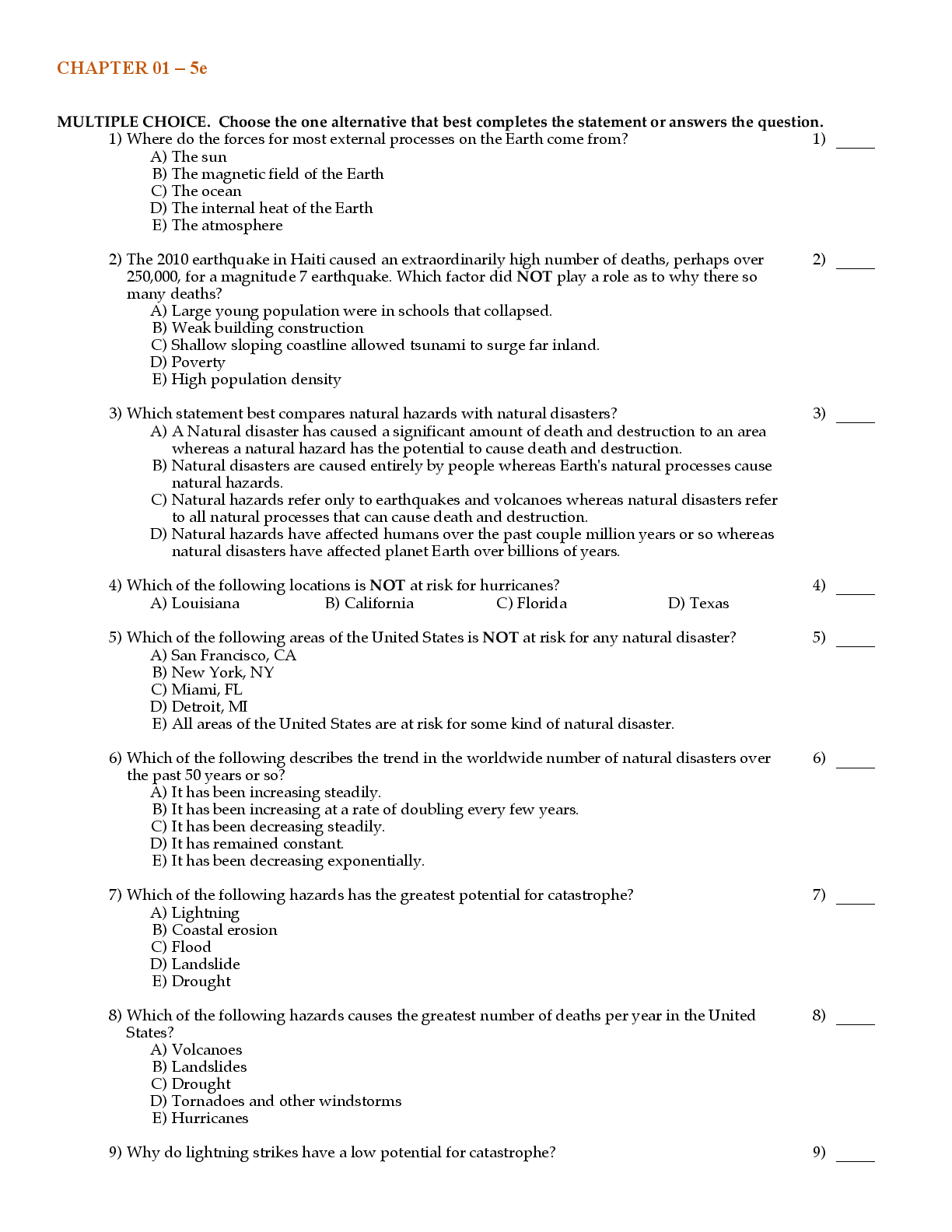

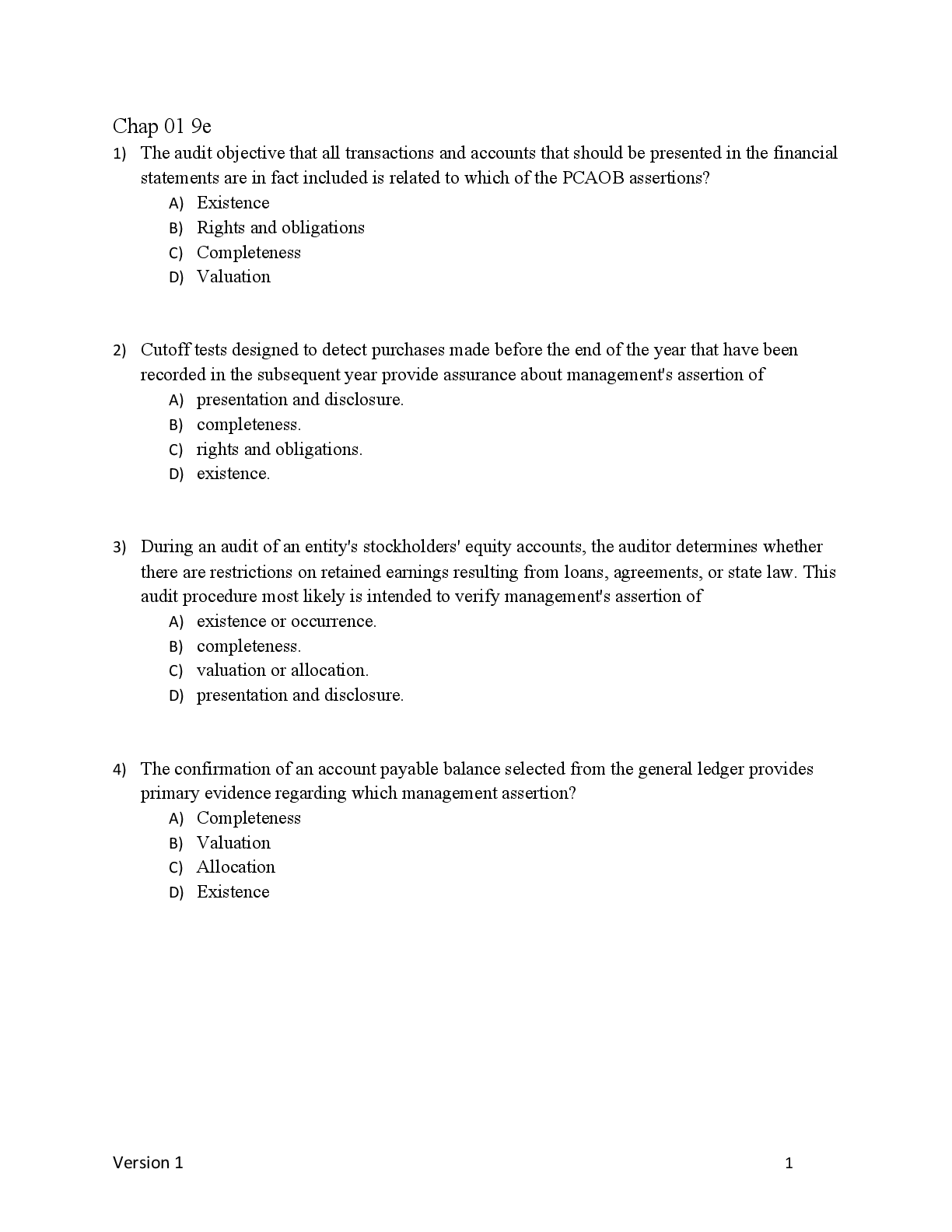









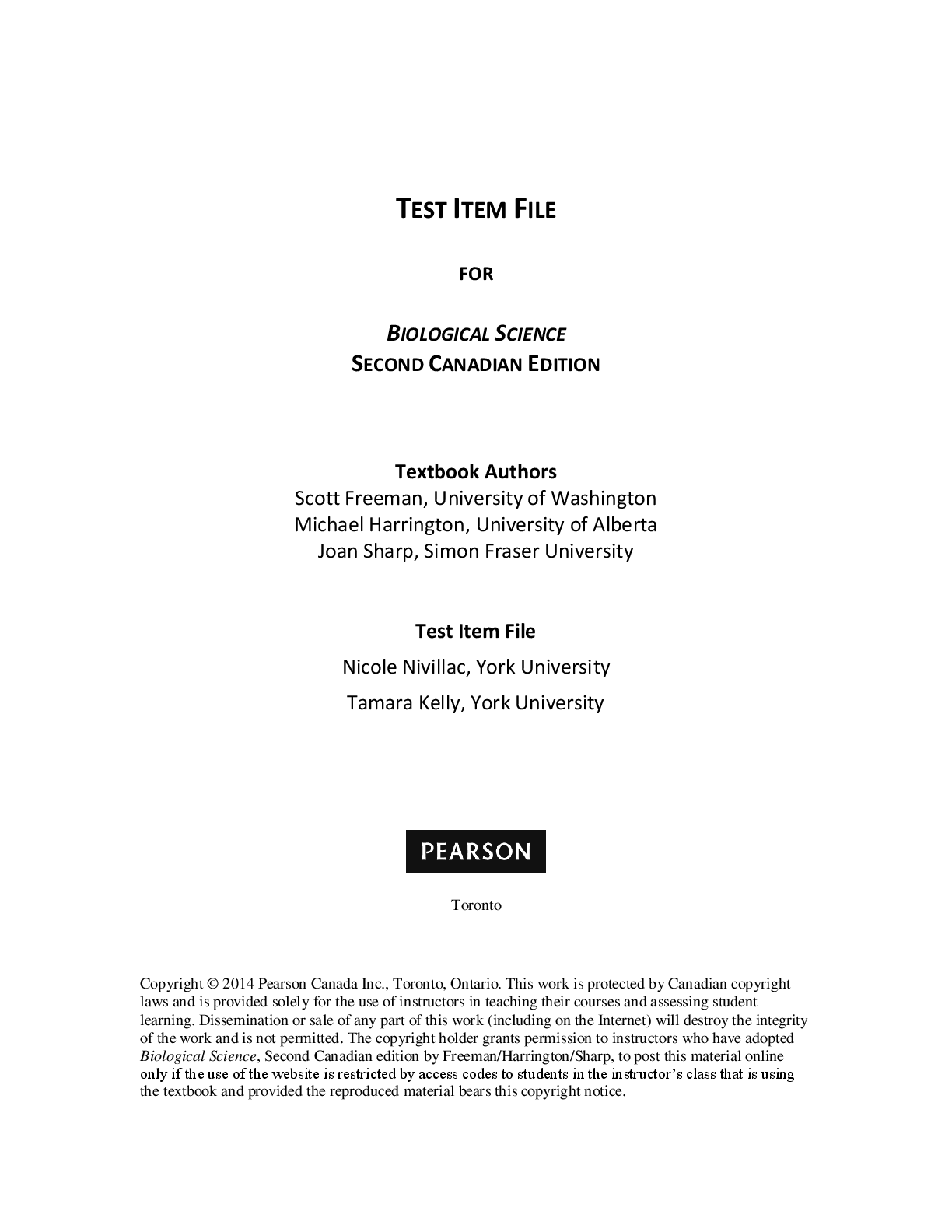
.png)


